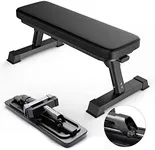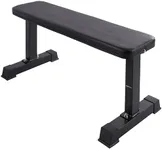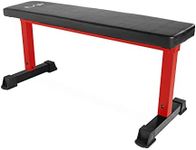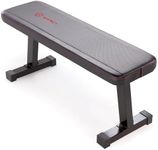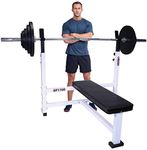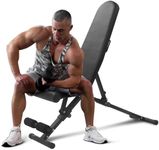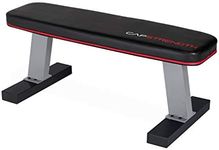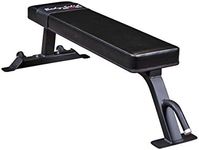Buying Guide for the Best Flat Bench Presses
Choosing the right flat bench press is crucial for anyone looking to build strength and muscle in their upper body. A flat bench press is a staple in many workout routines, and selecting the right one can make a significant difference in your training effectiveness and safety. When picking a flat bench press, consider the following key specifications to ensure you get the best fit for your needs.Weight CapacityWeight capacity refers to the maximum amount of weight the bench can safely support, including both your body weight and the weights you are lifting. This spec is important because it ensures the bench can handle your workout without risk of breaking or collapsing. Weight capacities typically range from 300 to over 1,000 pounds. If you are a beginner or have a lighter build, a bench with a lower weight capacity may suffice. However, if you are an advanced lifter or plan to lift heavy weights, opt for a bench with a higher weight capacity to ensure safety and durability.
Bench PaddingBench padding refers to the cushioning on the bench where you lie down. This spec is important for comfort and support during your workouts. Padding thickness can vary, with some benches offering thin padding and others providing thicker, more cushioned surfaces. If you plan to use the bench frequently or for extended periods, thicker padding can help prevent discomfort and provide better support. On the other hand, if you prefer a firmer surface or will use the bench less often, thinner padding may be sufficient.
Bench Width and LengthThe width and length of the bench determine how much space you have to lie down and perform exercises. This spec is important for ensuring you have enough room to move comfortably and safely. Standard benches typically have a width of around 10-12 inches and a length of about 45-50 inches. If you are taller or have a larger build, you may need a longer and wider bench to accommodate your size. Conversely, if you have a smaller build or limited space in your workout area, a more compact bench may be a better fit.
Stability and ConstructionStability and construction refer to the overall build quality and sturdiness of the bench. This spec is important for ensuring the bench remains stable during use and can withstand regular wear and tear. Look for benches made from high-quality materials like steel, with a solid frame and non-slip feet. If you plan to use the bench for heavy lifting or intense workouts, prioritize stability and construction to prevent wobbling and ensure long-term durability. For lighter use, a less robust bench may still provide adequate stability.
AdjustabilityAdjustability refers to the ability to change the angle of the bench to perform different exercises. While flat bench presses are typically non-adjustable, some models offer adjustable features to incline or decline the bench. This spec is important if you want versatility in your workouts. If you plan to perform a variety of exercises beyond the flat bench press, an adjustable bench can provide more options and target different muscle groups. However, if you only need the bench for flat bench presses, a non-adjustable model may be sufficient and more cost-effective.
